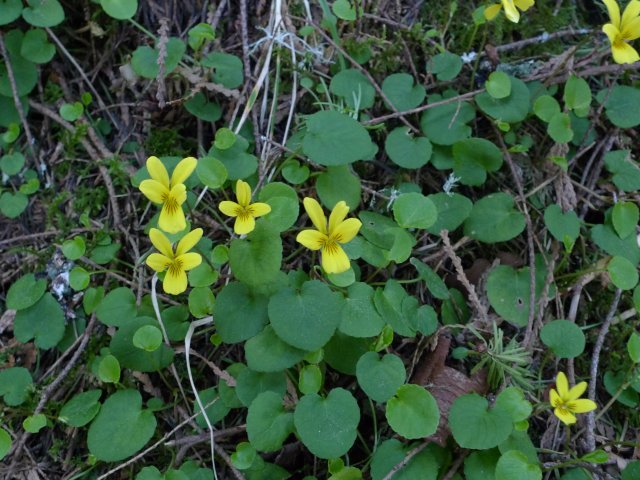Evergreen Violet (Viola sempervirens)
Published at 22:05 on 28 April 2021

This is probably the most common violet in our woods. As the first part of its common name implies, its foliage stays green through the winter. The second part of its scientific name implies the same thing; “sempervirens,” literally “ever-living,” is often used to denote a species with evergreen foliage.
The second part of this plant’s common name implies a color other than the yellow of this violet. For some reason, actual violet-flowered violet species are in this region outnumbered by white- and yellow-flowered species.
You might also notice the Stream Violet (Viola glabella). This violet also has yellow flowers, but its leaves are thinner, slightly lighter green, not evergreen, and come to a slight point at the tip. The Stream Violet is more fond of deciduous woods (and, as its name implies, damper locations) than the Evergreen Violet. It also tends to grow taller, although “taller” is in this case relative, since no violet is what one would call a tall plant.
The flowers and young leaves of all violets are edible. In fact, one of the most delightful characteristics of the Evergreen Violet is the slight wintergreen flavor of its blossoms, which in my opinion makes it the tastiest of our native violets.
Naturally, one should not eat the flowers of any plant unless it is numerous to the degree that consuming its reproductive parts is unlikely to endanger its survival. Thankfully, the Evergreen Violet frequently occurs in great numbers and thus a little snacking on it is often within the bounds of ethical use.
